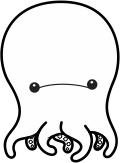◀︎ BLOG
3 Ways Design Can Help Tackle 2019's Big Challenges
With 2018 fading into the distance, we're looking with hopeful eyes toward what the next year may bring. Our ongoing projects and client work help us hold up a mirror to reflect on what’s been happening and make informed predictions about what’s to come. Here are a few forecasts from IDEO leaders on prospective trends in design and tech.
1. Design for human capabilities
We are in an uncomfortable place at the moment. Technology has connected us all more than ever, but we are feeling less substantive connection with one another. Human interaction has been reduced to lowest common denominators. Unhappy people click more. Now technology is starting to displace us. In the next few years, deep learning-based AI will take over human activities, from driving to medical diagnosis. The discomfort is increasing as society faces mass redundancy, increased inequality and a crisis of meaning. We can all feel it coming. Design can help.
The amazing thing about good design is that it looks at ambiguity and disruption and sees fertile ground. There is huge opportunity when we focus on things that humans are uniquely equipped to do—empathy, creativity, care, love.
If we do it right, we can conceive and shape new roles for humans in a layer on top of the efficiencies that machines can achieve. We can use those uniquely human traits to re-find and enhance community and depth in our relationships with each other. We can go from Artificial Intelligence to Augmented Intelligence.
—David Webster, Partner, IDEO Palo Alto
2. Design for emotional wellness
The uncertain state of the world is having clear consequences for individual health. You see it in the headlines everyday: Kids paralyzed by anxiety. Suicides by gun. Addiction to opioids. We live in the most technologically connected times, yet our rates of loneliness are increasing. If you dig deep, the common root is an absence of emotional and mental well-being.
I’m not talking about the well-being that’s branded through luxury experiences, like wellness retreats. I’m talking about what Maslow missed at the very bottom of his hierarchy: that sense of inner well-being that is absolutely necessary for our survival as humans.
What’s exciting about our moment now is that science has surfaced the myriad ways we can cultivate emotional and mental well-being—all of which are new channels for design.
Designing ways to get better sleep is also a way of designing for resilience to stress and better ability to manage our emotions. Tackling loneliness and designing for meaningful social connection is also a way of designing for a stronger immune system and brain protection. (Conversely, enabling chronic loneliness is as bad as smoking 15 cigarettes a day.) Designing ways to help people find their sense of purpose and meaning in life is an incredibly powerful way to design for healthier mind and bodies.
More and more, designers will realize their superpowers. Doctors and nurses are key players in facilitating wellness, but let's not forget that designers can be healers, too.
—Ann Kim, Portfolio Director, IDEO Cambridge
[This portion was also featured in Fast Company.]
3. Design for circularity
While it's easy these days to lament the state of the environment and the need for change, there's some hope to be found in the increased momentum towards a more circular economy. Collaborations between industry and design have yielded smart, feasible ideas for redirecting waste streams and reconnecting key stakeholders.
Businesses are investigating new product and packaging design that enables materials to be used again and again; they're asking how to leverage logistics in more efficient ways; and they're conceiving of new ownership models that could extend the lifecycle of the products they make.
The next questions on the horizon revolve around the economic systems that need to be in place to support these circular innovations. For example, we can design buildings so that they can be deconstructed—a circular engineering idea—but the cost of labor makes that reality prohibitive. In 2019, it's time for more applied circularity, leveraging emerging technology, organizational design, human insights, and social networks to create the conditions for the circular economy to take hold.
—Lauren Yarmuth, Portfolio Director, IDEO New York

